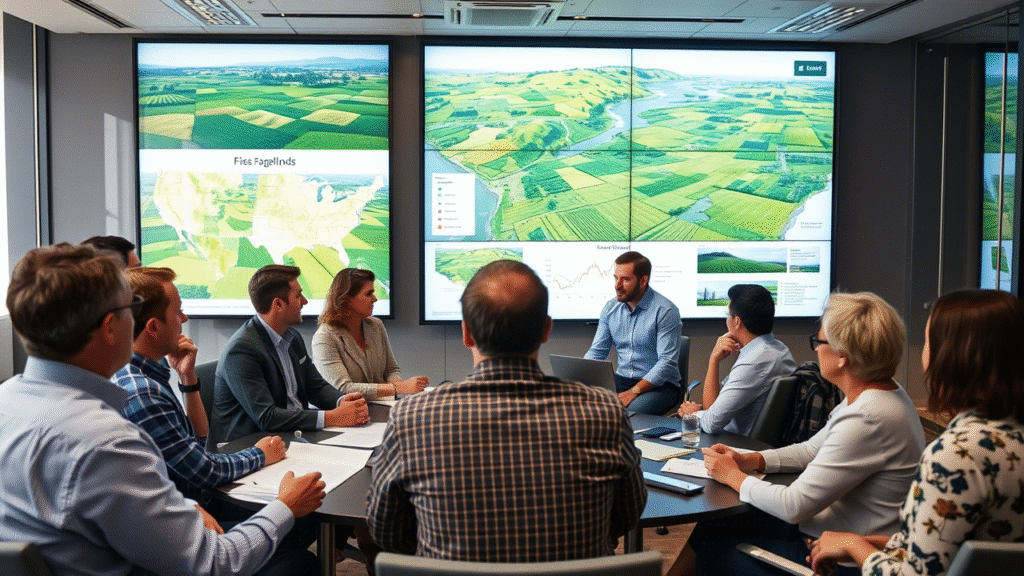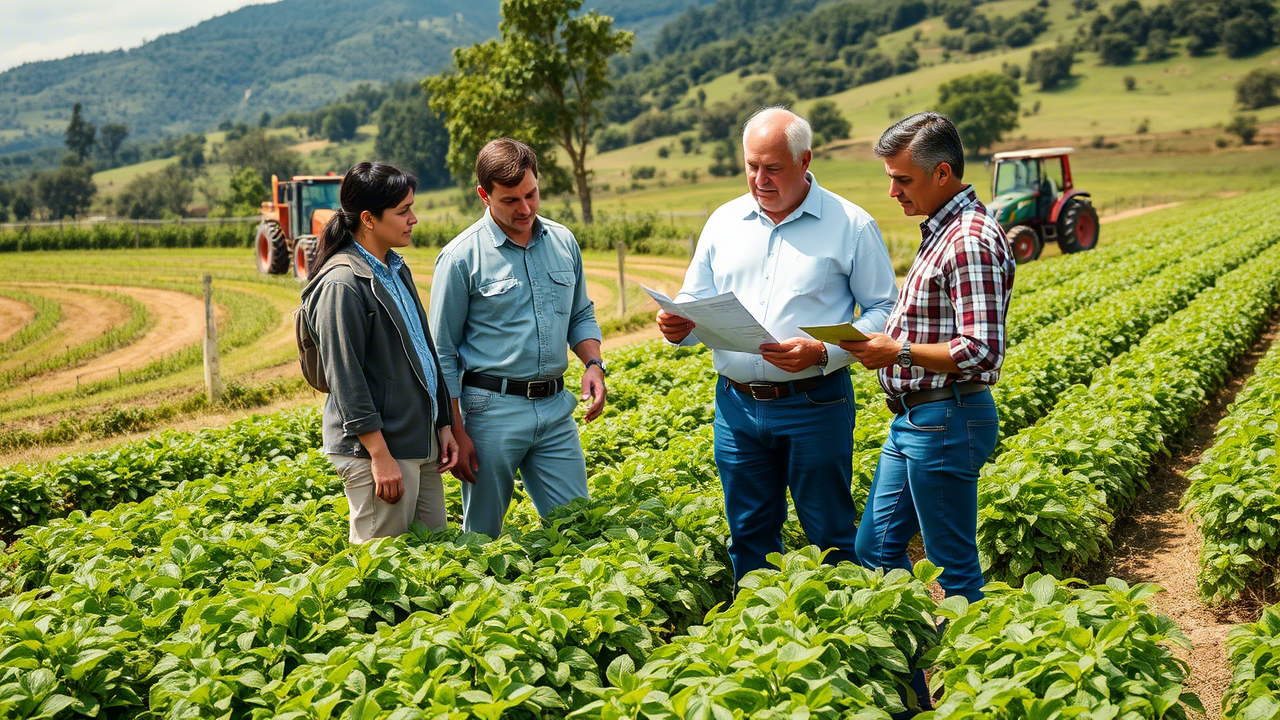Have you ever thought about investing in land? Maybe not. Most people think of investing as buying stocks, real estate in cities, or maybe even a small business. But there’s another kind of investment that’s growing fast and can be very rewarding — especially if you know what you’re doing.
That investment is agricultural fincas.
Let’s break this down into simple parts so anyone can understand it — no fancy words, no complex ideas. Just the basics, step by step.
What Is a FincaC
A finca is a Spanish word that means a piece of land used for farming or agriculture. It could be a farm, a ranch, a plantation, or just a big plot of land where crops are grown or animals are raised.
In many countries like Costa Rica, Colombia, or Mexico, “finca” refers to rural land that’s used for agricultural purposes. These places often grow fruits, vegetables, coffee, sugar cane, or raise cattle.
So when we talk about investing in agricultural fincas, we’re talking about buying land that is used (or can be used) for farming, with the goal of making money from it.
Why Invest in Agricultural Fincas?
There are many reasons why people invest in fincas. Here are some of the biggest ones:
1. Land Doesn’t Disappear
Unlike money or stocks, land doesn’t vanish. If you own land, you always have something real — something physical. Even if prices go up and down, the land itself stays there.
2. Demand for Food Never Goes Down
People need to eat every day. As the world grows, more food will be needed. That means farmland becomes more valuable over time.
3. You Can Earn Money in Different Ways
You don’t just buy a finca and wait. There are several ways to make money:
- Grow crops and sell them
- Rent the land to farmers
- Raise animals and sell meat or dairy products
- Sell the land later for a higher price
- Turn it into an eco-tourism spot or organic farm
4. It Helps the Environment (Sometimes)
Some fincas are used for sustainable farming — meaning they help protect nature instead of harming it. People who care about the environment are starting to invest in these kinds of farms because they believe in both profit and planet.
How Do You Start Investing in Fincas?
Now that you know why someone might invest in fincas, let’s look at how to do it. This part is important, especially if you’ve never done anything like this before.
Step 1: Learn About Agriculture
You don’t need to become a farmer overnight, but you should understand the basics:
- What grows well in different regions?
- What kind of soil is best for certain crops?
- What are the costs of running a farm?
Think of it like learning how to cook before opening a restaurant. You don’t need to be a chef, but you need to know the kitchen works.
Step 2: Choose a Location
Where you buy your finca matters a lot. Some places are better than others for farming. For example:
- Costa Rica is known for coffee and tropical fruits.
- Argentina is famous for beef and soybeans.
- Brazil has huge areas of land for growing sugar cane and soy.
Each place has its own climate, laws, and markets. So pick a location that matches what you want to grow or produce.
Step 3: Understand the Laws and Rules
Before you buy land, learn the rules in that country or region:
- Can foreigners buy land?
- Are there taxes on agricultural land?
- Who owns the water rights?
This may sound boring, but it’s like checking the rules before playing a game. You don’t want to lose everything because you didn’t read the fine print.
Step 4: Work With Local Experts
Even if you’re smart and careful, you won’t know everything. That’s why it’s good to work with:
- Farmers – They know how to grow things.
- Lawyers – To help with contracts and ownership.
- Real estate agents – To find good deals on land.
- Bankers or investors – To help you finance the purchase.
They can help you avoid mistakes and get better results.
Step 5: Decide How Much You Want to Be Involved
Some people buy a finca and run it themselves. Others hire someone else to manage it while they collect profits. Think about:
- Do you want to live on the finca?
- Do you want to visit often?
- Or would you rather leave it to professionals?
Your answer will affect how much time and money you spend.
Real-Life Examples: How People Make Money From Fincas
Let’s look at some examples of how regular people invest in fincas and make money.
Example 1: Coffee Farm in Colombia
Carlos lives in Spain. He loves Colombian coffee and decides to invest in a small coffee finca. He buys 10 hectares (about 25 acres) in the mountains of Colombia. He hires local workers to plant and harvest the coffee. Every year, he sells the beans and earns a steady income. Over time, the value of his land goes up too.
Example 2: Organic Farm in Costa Rica
Maria is from Canada. She cares about the environment and wants to invest in something green. She buys a finca in Costa Rica and turns it into an organic vegetable farm. She sells her produce to local restaurants and also opens a small eco-lodge where tourists can stay and learn about farming.
She makes money from both farming and tourism.
Example 3: Rental Farmland in Argentina
Tom is a retired teacher in the U.S. He doesn’t want to work the land himself. Instead, he buys farmland in Argentina and rents it out to a soybean farmer. The farmer pays him rent every year, and Tom gets a return without lifting a shovel.
These are just a few examples. There are many ways to make money with fincas — the key is finding what fits your goals and lifestyle.
Risks and Challenges
Like any investment, buying a finca comes with risks. Here are some of the main problems you might face:
1. Weather Can Hurt Your Business
If it rains too much or not enough, your crops might fail. That’s why many smart investors diversify — meaning they invest in different types of land in different places.
2. Prices Go Up and Down
The price of corn, coffee, or beef can change every year. One year you might make a lot of money; the next year, not so much. It’s like the stock market, but with dirt and plants.
3. It Takes Time to See Profits
Farms don’t grow money overnight. It takes months or years to see real returns. So you need patience and planning.
4. Language and Cultural Barriers
If you’re investing in another country, you might not speak the language or understand local customs. That’s why working with locals is so important.
5. Legal Issues
Buying land in another country can be tricky. There may be hidden debts, unclear ownership, or other problems. Always use a lawyer and check everything carefully.
Tips for New Investors
If you’re new to investing in fincas, here are some tips to help you start strong:
Start Small
Don’t buy a huge farm right away. Start with a smaller plot and learn as you go. It’s better to make small mistakes than big ones.
Visit the Land Yourself
Don’t just buy land online without seeing it. Go there if you can. Walk around. Talk to people. Smell the air. Get a feel for the place.
Keep Learning
Read books, watch videos, talk to experts. The more you know, the better decisions you’ll make.
Don’t Try to Do Everything Alone
Use local guides, lawyers, and farmers. They know more than you do — and that’s okay!
Be Patient
Farming and investing take time. Don’t expect quick riches. Think long-term.
The Future of Agricultural Investments
As the world changes, so does farming. Here are some trends that are shaping the future of finca investments:
Sustainable Farming
More people want food that’s grown in a healthy way. Farms that use less chemicals, protect nature, and treat workers well are becoming more popular.
Technology in Agriculture
Drones, sensors, and smart machines are helping farmers grow more with less effort. Tech-savvy investors are looking for ways to combine farming with modern tools.
Climate Change
Farms are affected by rising temperatures and extreme weather. Smart investors are choosing land in safer areas and using methods that protect against droughts and floods.
Tourism and Education
Many fincas are now offering tours, workshops, and vacation stays. This creates extra income and connects people with nature.
Summary
Investing in agricultural fincas means buying land used for farming and making money from it. It’s a real, lasting investment that helps feed the world and protect the environment.
Here’s what we’ve learned:
- A finca is farmland used for growing crops or raising animals.
- Investing in fincas gives you real assets (land), offers steady income, and can help the planet.
- You can earn money through farming, renting, selling, or combining uses.
- There are risks, like weather, price changes, and legal issues.
- To succeed, you should learn, plan, work with locals, and be patient.
- The future of fincas includes sustainability, technology, and education.
Whether you’re a beginner or someone with experience, investing in fincas can be a smart move — if you do it right.
Final Thoughts
If you’ve made it this far, congratulations! You now know more about investing in agricultural fincas than most people.
It might seem complicated at first, but once you break it down, it’s really just about understanding land, food, and people. And those are things everyone can relate to.
So whether you dream of owning a coffee farm in Colombia, a fruit orchard in Brazil, or simply want to add farmland to your investment portfolio — now you have the basic knowledge to start.
Remember: Great investments begin with great questions. Ask, learn, and take small steps. Before you know it, you’ll be unlocking real value — one finca at a time.







Deixe um comentário